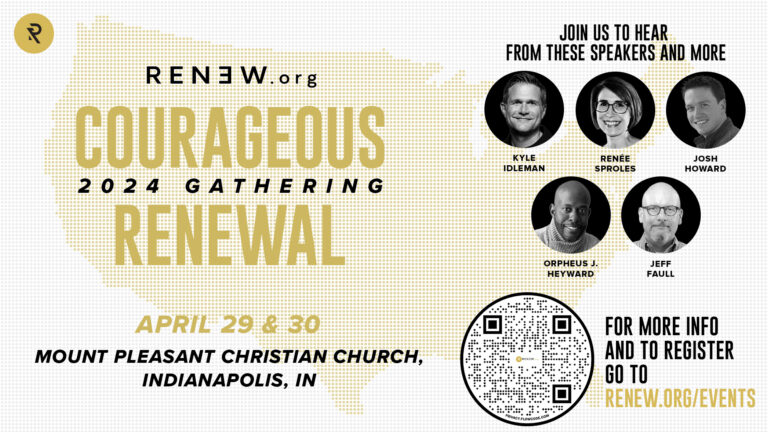What is expository preaching? Rather than a particular method or style, expository preaching is a theological/philosophical approach to preaching which makes a text of Scripture central. Expository preaching builds from discerning a text’s pericope, exegeting it, discerning its form and intent, and exploring appropriate application.
Nearly half a century ago, preaching students were introduced to three categories of sermons: textual (1-2 verses), expository (3 or more verses), and topical. Those categories proved unhelpful because they defined the length of a passage but said nothing about the approach to the text and the resulting sermons.
In our current preaching culture (among conservatives at least), the popular concept of expository preaching rules the conversations. According to this popular concept, expository preaching is a method or style in which sermons spend significant time in the text, reflecting on words, phrases, and explanation, with attempts at applications to contemporary life. But this description also proves less than helpful.
To be clear, this article is not about a preaching method or style; it’s about a theological/philosophical approach to preaching. I want to show that if we build a firm underpinning, committing ourselves to the foundational tenets of expository preaching, we can effectively choose any number of preaching approaches, genuinely producing sermons that are expository.
Sweeping the Floor: What Expository Preaching Is Not…
Let’s begin by clarifying some misconceptions that have become commonplace. It shouldn’t be assumed that you can’t preach in the following ways or that nothing good comes from these approaches. But they may or may not qualify as expository preaching.
Verse-by-Verse Exegesis
Expository preaching is not verse-by-verse exegesis. Exegesis is the hard work that takes place in the study as the preacher parses verbs, evaluates grammar, does word studies, discovers important background information, etc. Exegesis results in answering the question, “What did this text mean to the original recipients?”
Exegesis is indispensable to preaching. We must know what a text meant before we can determine what it means. In my experience, most of the exegetical work, however, remains in the study with only the most insightful bits making it into the oral presentation.
“In my experience, most of the exegetical work remains in the study with only the most insightful bits making it into the oral presentation.”
Running Commentary
Expository preaching is not running commentary. In the name of exposition, preachers often read through a verse making random comments (usually in the form of misapplication). The preacher rarely tackles an actual paragraph. Usually, the time blocked for preaching determines length of the text.
Rarely do the listeners have an inkling of why those comments were made. They seem to be stimulated by an image in the text or a word that releases the preacher to opine on a topic he finds suggested by the text.
A Captioned Overview of a Text
Expository preaching is not a captioned overview of a text. These sermons often are reasonably accurate summaries of the text, but rarely involve the contemporary listeners. They are history lessons with occasional forays into some attempted application.
For example, here is a captioned overview of Luke’s account of Saul on the road to Damascus in Acts 9.
- Saul met Jesus while traveling to Damascus (v. 1-9)
- Ananias came to Saul on Straight Street (v. 10-19)
- Saul preached in Damascus until he was forced to escape (v. 20-25)
- Barnabas introduced Saul to the Jerusalem church (v. 26-30)
These three common approaches to “exposition” are the primary counterfeits. And, again, some of those sermons are helpful and encouraging and aid the Holy Spirit in drawing people closer to Jesus. But they lack the fundamental building blocks of good expository preaching.
Building a Foundation: What Expository Preaching Is…
Where Expository Preaching Starts
JK Jones and Mark Scott capture the essence of the issue with the title of their homiletics text, Letting the Text Win! Or, as Haddon Robinson wrote, “Expository preaching at its core is more a philosophy than a method. Whether or not a man can be called an expositor starts with his purpose and with his honest answer to the question: ‘Do you, as a preacher, endeavor to bend your thought to the Scriptures, or do you use the Scriptures to support your thought?'”[1]
John McClure said it this way, “The biblical text must be carefully studied in its original historical context, and every effort must be made to modify sermon ideas, purposes, or forms to agree with scripture.”
What is expository preaching? “Do you, as a preacher, endeavor to bend your thought to the Scriptures, or do you use the Scriptures to support your thought?” —Haddon Robinson
Define the Pericope
Not to overstate the obvious, but good expository preaching begins by defining the “pericope” (section) to be preached. It must be a complete thought (paragraph, strophe, oracle, story—depending upon the genre). Thus, the primary error of the three counterfeits listed above.
Bypassing this first step violates the intent of the author. Authors wrote specific words to address specific situations and did so in complete thoughts. We all know the horrific damage done by taking texts out of their contexts. That includes not respecting either the literary parameters of the text or the genre—the form in which the text has been delivered to us.
Exegete the Text
Once the parameters of the text are determined, the work of exegesis begins (not the perusal of commentaries which comes last). Exegesis will lead the preacher to know what the text meant to the original recipients. As Fee and Stuart have pointed out in How to Read the Bible for All It’s Worth, “a text can never mean what it never meant.”
The result of this “hard chair” work (Fred Craddock imagery) is discovering the primary meaning of the text and seeking to determine what that could look like in our situation. It leads to what Robinson calls a “biblical concept” or Stott calls a “dominant thought.” In other words, we are seeking the overall message of the text, not merely the insights of various component parts.
What is expository preaching? “We are seeking the overall message of the text, not merely the insights of various component parts.”
Discover the Intent
But it’s not merely a matter of aligning the primary idea the text conveys. Expository preaching demands that the preacher ask the intent of the passage. What was the author trying to accomplish with this letter (poem, speech, etc.)? The text doesn’t exist in a vacuum. It was written to real people in real circumstances and was intended to service a real purpose. Our role is to discover that purpose.
Fred Craddock, in Preaching, reminds preachers, “Does the sermon say and do what the biblical text says and does? . . . . It is possible that a sermon that buries itself in the text, moves through it phrase by phrase, and never comes up for air may prove to be ‘unbiblical’ in the sense that it fails to achieve what the text achieves.”
In expository preaching, the preacher ponders, “As a result of this sermon, what will my listeners do, feel, think, believe, etc.?” The answer should reflect the author’s intent and lead to clarity for the listener to know how to respond to the text. The key is to ask the question from the perspective of the listener, not from the perspective of the preacher.
What is expository preaching? “The answer should reflect the author’s intent and lead to clarity for the listener to know how to respond to the text.”
Consider the Form
Having determined the dominant thought and aim of the text (and thus, the sermon), the textual form deserves attention. In thinking about Acts 9, the story unfolds in four scenes, allowing the sermon to make four subtle moves as a means of giving the sermon direction. Luke elevates the resurrection of Jesus and describes how the risen Jesus changes the various character’s perspectives. Among other potential reasons for including the story, Luke makes it clear that for the church to reach the uttermost parts of the earth, changes in perspective will have to occur.
- Move one—we no longer see people according to the flesh (Saul rethinking Jesus—captured in 2 Corinthians 5:16).
- Move two—we will not pre-judge who can be converted (Ananias’ perspective about Saul had to change).
- Move three—we will gain an immediate purpose in sharing the gospel (Saul’s perspective about who needed the gospel changed).
- Move four—we all need a community for support and encouragement (Barnabas encouraging the Jerusalem church to see Saul differently).
Luke suggests that in encountering the risen Jesus, our listeners will recognize their biases, becoming open to all, and they will relinquish their reticence in approaching those who seem to be disenfranchised.
What is expository preaching? “Having determined the dominant thought and aim of the text (and thus, the sermon), the textual form deserves attention.”
Textual form is not restrictive, but informative. Not every sermon from a Psalm needs to be a poem, nor every sermon from an epistle a letter, but the form of the text should be given due attention. Parables are not commands, parts of some letters apply only to that time and place, symbols and figurative language have their own special influences. Expository preaching respects those differences.
Explore the Application
Good expository preaching not only seeks to say and do what the text says and does, while respecting its form, it seeks appropriate application. What are the commonalities between that community and ours? Where do our experiences overlap? How are we different and what does that mean for application purposes?
Why all this matters…
I think we would all agree that many in our churches are biblically illiterate. Most simply don’t know basic biblical information. But even those “well-versed” in the information often don’t know what to do with it.
The solution is not people merely reading the Bible more—they need to read better. One of the best places to model those practices is in preaching. People should be exposed to how to see the broad message of a text and to understand what that text seems to desire as a response. They need help with appropriate application so they don’t run off on tangential journeys into understandings that Paul (or the other authors) would have never recognized.
What is expository preaching? “The solution is not people merely reading the Bible more—they need to read better. One of the best places to model those practices is in preaching.”
And preachers need guidelines. Few ever espouse misapplication intentionally. But without something that controls our approach to our sermons, we are prone to letting the listeners and their needs determine what ends up in our sermons instead of relaying what the text seeks to convey.
Expository preaching teaches our listeners to have high regard for the text. It encourages them to study Scripture in thought units instead of merely reading a verse here and there. And it instills a passion for obedience to what the text asks from us.
[1] Haddon Robinson, Biblical Preaching (Grand Rapids: Baker Academic, 2001), 22.











